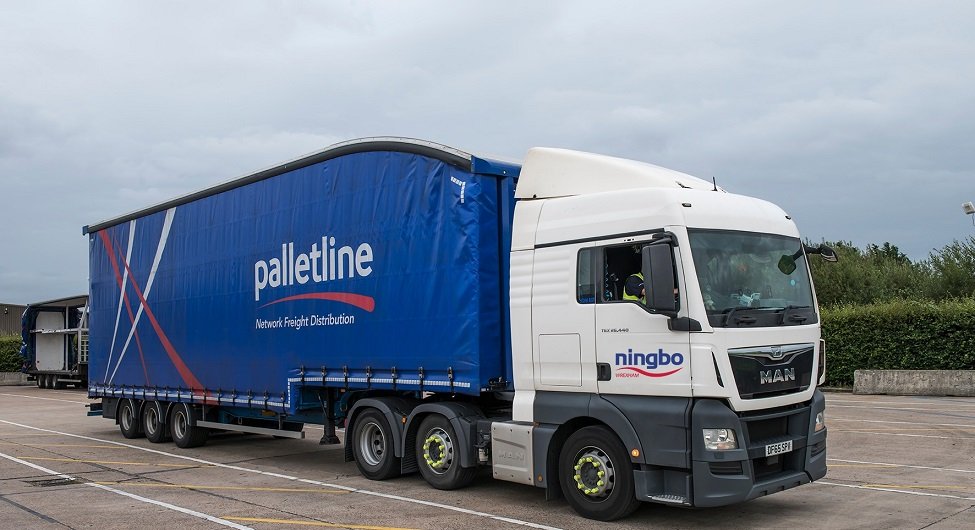In today’s global economy, businesses are constantly searching for ways to deliver goods faster, safer, and more cost-effectively. Logistics networks have become the backbone of trade, ensuring that products reach their destinations on time. Among the many players in the industry, Palletline Logistics has established itself as a trusted name in the palletised freight sector, offering innovative solutions that combine efficiency, collaboration, and reliability. Understanding how this network works, why it matters, and what sets it apart provides valuable insight into the future of distribution.
What is Palletline Logistics?
Palletline Logistics is a cooperative network of transport and distribution companies that specialize in palletised freight. Instead of relying on a single large operator, Palletline brings together numerous independent hauliers across the United Kingdom, creating a collaborative system where each member contributes to moving goods efficiently. This cooperative structure ensures nationwide coverage while maintaining high standards of service at local levels.
The concept revolves around consolidating goods onto pallets, which are then moved through regional depots and central hubs. This structure minimizes duplication of transport routes, maximizes vehicle utilization, and ultimately reduces costs for businesses of all sizes. With decades of experience, Palletline has become synonymous with reliability, transparency, and innovation in palletised freight distribution.
The Origins and Growth of Palletline
Palletline was founded in 1992 as the UK’s first palletised freight distribution network. Its creation marked a turning point in logistics, as it introduced a model based on cooperation rather than competition among regional hauliers. The idea was simple yet groundbreaking: instead of each company running separate routes, they would share resources, depots, and deliveries, creating a streamlined and efficient national service.
Over the years, the network has expanded significantly. Today, Palletline consists of more than 90 member companies, collectively covering every postcode across the UK. By pooling expertise and resources, the network has not only survived but thrived in a competitive logistics market. Its reputation for innovation and service quality has made it a preferred partner for businesses across industries, from retail to manufacturing.
How Palletline Logistics Works
At the heart of Palletline’s operations is a hub-and-spoke model. Local members collect freight from customers and deliver it to regional depots. From there, the freight is consolidated and transported to central hubs, where it is sorted and redirected to the appropriate regions for final delivery. This system ensures that goods are moved efficiently without unnecessary duplication of routes.
The process can be broken down into key stages:
Collection – Local hauliers pick up palletised goods from businesses.
Consolidation – Pallets are grouped at regional depots, maximizing vehicle loads.
Hub Transfer – Goods are moved to central hubs where they are sorted.
Distribution – Pallets are redirected to the regional depot closest to the final destination.
Final Delivery – Local members complete the last-mile delivery.
This cooperative structure benefits both businesses and hauliers. Customers enjoy nationwide coverage and consistent service, while member companies share resources and reduce operating costs.
Advantages of Palletline Logistics
1. Nationwide Coverage with Local Expertise
One of the greatest strengths of Palletline is its ability to combine national reach with local knowledge. Because it is made up of regional transport companies, customers benefit from the expertise of hauliers who understand local routes, regulations, and customer needs.
2. Cost Efficiency
By consolidating freight and optimizing vehicle usage, Palletline significantly reduces empty miles and wasted fuel. This cost efficiency is passed on to customers, making palletised freight more affordable without compromising quality.
3. Reliability and Transparency
The cooperative model ensures accountability at every stage. Each member is responsible for maintaining service standards, and advanced tracking systems provide customers with visibility into their shipments. Transparency builds trust, making Palletline a dependable partner.
4. Scalability for Businesses
Whether a company is shipping a single pallet or multiple loads, Palletline can accommodate varying needs. This scalability is particularly useful for small and medium-sized enterprises that require flexible logistics solutions.
5. Environmental Benefits
The reduction of empty journeys contributes to lower carbon emissions. By maximizing vehicle loads and streamlining transport routes, Palletline helps businesses adopt more sustainable supply chain practices.
Challenges in Palletline Logistics
Despite its strengths, Palletline, like all logistics providers, faces challenges. The industry is heavily influenced by external factors such as fuel costs, driver shortages, and regulatory changes. Seasonal peaks, such as holiday shopping periods, can also put strain on resources and require careful planning.
Additionally, the cooperative model requires strong collaboration among members. Any lapse in service by one partner can affect the network as a whole. Maintaining consistent quality across such a wide network is challenging but essential for customer satisfaction.
Technology in Palletline Operations
Technology has become an integral part of modern logistics, and Palletline has embraced digital transformation to improve its services. Advanced IT systems track pallets throughout the network, offering real-time visibility and reducing the risk of lost or delayed shipments. Automated sorting at hubs speeds up the redistribution process, ensuring timely deliveries even during high-demand periods.
Furthermore, customers benefit from online booking systems and tracking portals that make it easier to schedule collections, monitor progress, and receive proof of delivery. Integration with supply chain software allows businesses to streamline their logistics planning, ensuring smoother operations from warehouse to customer.
Sustainability and Green Initiatives
In recent years, sustainability has become a major priority for the logistics sector. Palletline has responded by investing in eco-friendly practices, including route optimization to reduce fuel consumption and emissions. The network also encourages members to adopt low-emission vehicles, alternative fuels, and energy-efficient warehouse practices.
Another key sustainability initiative is the promotion of pallet re-use and recycling. By extending the life cycle of pallets and reducing waste, Palletline supports greener supply chain practices that align with corporate social responsibility goals.
Industries Served by Palletline
Palletline serves a wide variety of industries, each with unique logistics needs:
- Retail: Ensuring goods reach stores quickly and efficiently.
- E-commerce: Handling the surge in palletised deliveries driven by online shopping.
- Manufacturing: Moving raw materials and finished products to and from factories.
- Food and Beverage: Delivering packaged food and drink products safely.
- Pharmaceuticals: Providing reliable and secure distribution for sensitive products.
The flexibility and scale of Palletline’s operations make it suitable for both high-volume and specialized freight.
The Future of Palletline Logistics
Looking ahead, Palletline is well-positioned to adapt to changes in the logistics landscape. Automation, artificial intelligence, and data analytics will likely play larger roles in optimizing operations. Predictive technologies may help anticipate demand surges, while smart pallets equipped with tracking sensors could provide even greater visibility for customers.
Sustainability will remain a key focus, with an increasing emphasis on reducing emissions and adopting circular economy practices. Collaboration with green technology providers may lead to more electric and hydrogen-powered delivery vehicles across the network.
Additionally, customer expectations will continue to evolve. As businesses and consumers demand faster and more flexible deliveries, Palletline will need to enhance last-mile solutions and expand its digital offerings to maintain its competitive edge.
Conclusion
Palletline Logistics has proven that collaboration can be a powerful tool in creating a more efficient and reliable freight network. By combining the strengths of local hauliers with the resources of a national system, it has transformed how palletised goods are moved across the UK. From cost savings and environmental benefits to technological innovation and customer-focused service, Palletline continues to set the standard in logistics.
Related Reads
- Get Ready for the Holidays: Why Your Bakery Needs to Prepare for Christmas Early
- Why Our Diesel Storage Tanks UAE Keep Fuel Safe, Compliant and Cost-Effective
- Smart Design Choices: L Shape Sofas for Dubai Living Rooms
- Tax Implications & How a Crypto Calculator Can Help
- Cubic Yard Calculator – Figure Cubic Yard Easily



